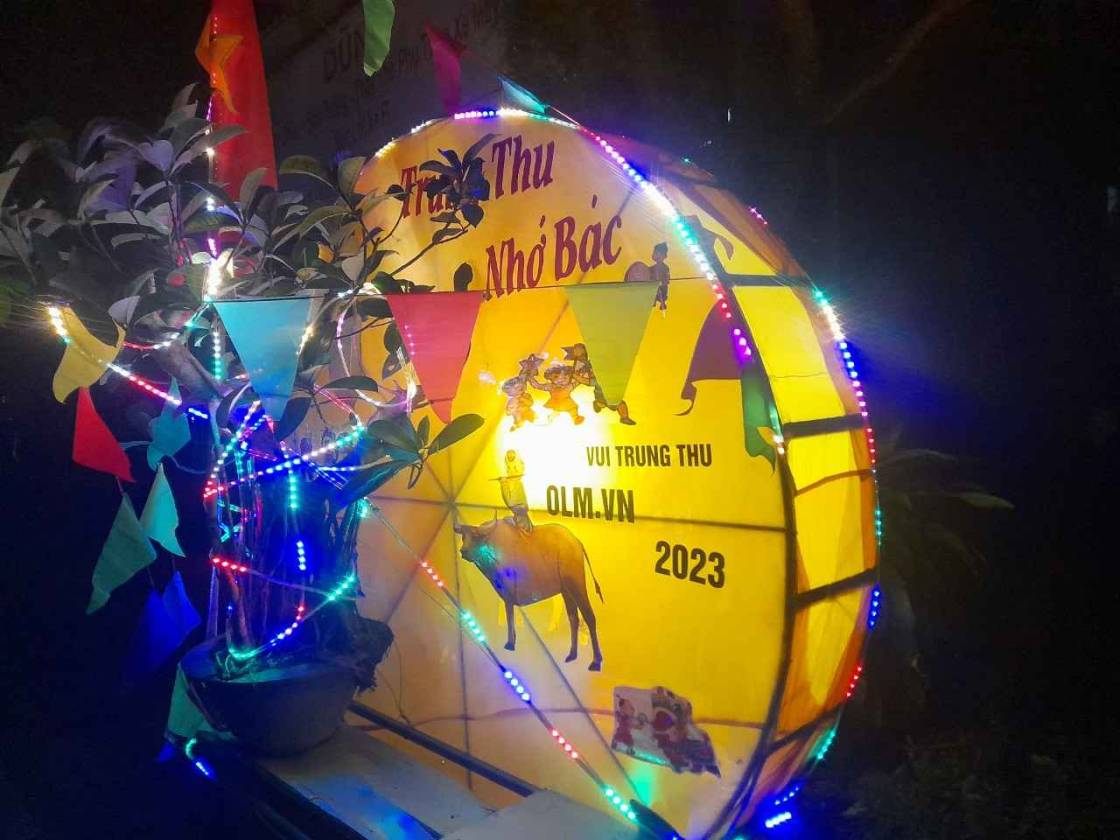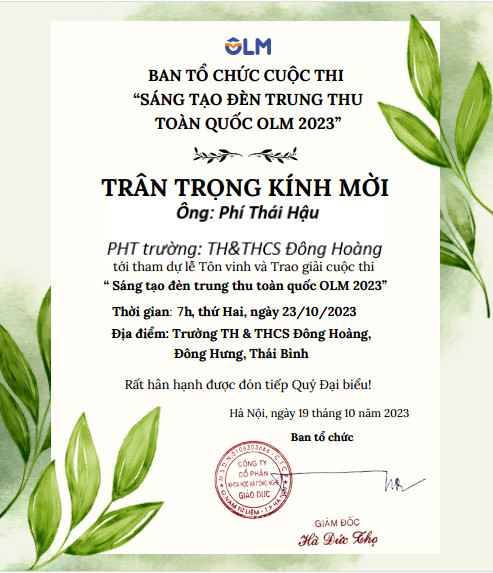


Hãy nhập câu hỏi của bạn vào đây, nếu là tài khoản VIP, bạn sẽ được ưu tiên trả lời.


\(ac+bd=\left(b+d+a-c\right)\left(b+d-a+c\right)\)
\(\Leftrightarrow ac+bd=\left(b+d\right)^2-\left(a-c\right)^2\)
\(\Leftrightarrow ac+bd=b^2+d^2+2bd-a^2-c^2+2ac\)
\(\Leftrightarrow a^2-c^2=b^2+d^2+ac+bd\) (1)
Ta có
\(\left(ab+cd\right)\left(ad+bc\right)=a^2bd+ab^2c+acd^2+bc^2d=\)
\(=bd\left(a^2+c^2\right)+ac\left(b^2+d^2\right)\) (2)
Thay (1) vào (2)
\(\left(ab+cd\right)\left(ad+bc\right)=bd\left(b^2+d^2+ac+bd\right)+ac\left(b^2+d^2\right)\)
\(\Leftrightarrow\left(ab+cd\right)\left(ad+bc\right)=bd\left(b^2+d^2\right)+bd\left(ac+bd\right)+ac\left(b^2+d^2\right)\)
\(\Leftrightarrow\left(ab+cd\right)\left(ad+bc\right)=\left(b^2+d^2\right)\left(ac+bd\right)+bd\left(ac+bd\right)\)
\(\Leftrightarrow\left(ab+cd\right)\left(ad+bc\right)=\left(ac+bd\right)\left(b^2+d^2+bd\right)\) (3)
Do \(a>b>c>d\)
\(\Rightarrow\left(a-d\right)\left(b-c\right)>0\Leftrightarrow ab-ac-bd+cd>0\)
\(\Leftrightarrow ab+cd>ac+bd\) (4)
Và
\(\left(a-b\right)\left(c-d\right)>0\Leftrightarrow ac-ad-bc+bd>0\)
\(\Leftrightarrow ac+bd>ad+bc\) (5)
Từ (4) và (5) \(\Rightarrow ab+cd>ad+bc\)
Ta có
(3)\(\Leftrightarrow b^2+d^2+bd=\dfrac{\left(ab+cd\right)\left(ad+bc\right)}{\left(ac+bd\right)}\) (6)
Vế trái là số nguyên => vế phải cũng phải là số nguyên
Giả sử ab+cd là số nguyên tố mà \(ab+cd>ac+bd\)
\(\Rightarrow UC\left(ab+cd;ac+bd\right)=1\) => ab+cd không chia hết cho ac+bd
=> để vế phải của (6) là số nguyên \(\Rightarrow ad+bc⋮ac+bd\Rightarrow ad+bc>ac+bd\) Mâu thuẫn với (5) nên giả sử sai => ab+cd không thể là số nguyên tố
mình là người mới ,cho mình hỏi làm sao để kiếm xu đổi quà

Title: A Guide to Making Your School Greener
Introduction: Welcome to our guide on how to make your school greener! By implementing sustainable practices, you can contribute to a cleaner environment and create a positive impact on the planet. In this guide, we will provide you with practical steps to help you and your school become more eco-friendly.
1. Reduce Paper Usage:
Encourage digital communication: Promote the use of emails, online platforms, and shared documents instead of relying on paper-based communication.
Opt for electronic assignments: Encourage teachers to accept electronic submissions for assignments, reducing the need for printed papers.
Utilize both sides of the paper: Encourage students and staff to print on both sides of the paper whenever possible.
2. Implement Recycling Programs:
Set up recycling stations: Place recycling bins strategically throughout the school to make it convenient for everyone to recycle paper, plastic, glass, and other recyclable materials.
Educate on proper recycling: Provide clear instructions on what can and cannot be recycled, ensuring that everyone understands the recycling process.
3. Conserve Energy:
Turn off lights and electronics: Remind students and staff to switch off lights, computers, and other electronic devices when not in use.
Utilize natural lighting: Make the most of natural light by opening curtains and blinds, reducing the need for artificial lighting during the day.
Upgrade to energy-efficient appliances: Encourage the school administration to invest in energy-efficient appliances and LED lighting, reducing energy consumption.
4. Promote Water Conservation:
Fix leaks and drips: Address any leaks or drips in faucets, toilets, or other water fixtures promptly to prevent wastage.
Encourage shorter showers: Raise awareness about the importance of shorter showers to conserve water and encourage students to be mindful of their water usage.
Collect rainwater: Install rain barrels to collect rainwater for watering school gardens or other non-potable uses.
5. Develop Green Spaces:
Start a school garden: Set up a garden where students can learn about sustainable gardening practices and grow their food.
Plant native trees and plants: Native plants require less water and maintenance, while also providing habitat for local wildlife.
Create green roofs: Implement green roofs or living walls to improve insulation and reduce energy consumption while enhancing the aesthetic appeal of the school.
Conclusion: By following these steps, you can make your school a greener and more sustainable place. Remember, small changes can have a significant impact when everyone in the school community works together towards a greener future. Start implementing these practices today and lead the way in creating a more environmentally conscious school environment.

Từ dữ kiện thứ hai, ta thấy 4 số có cùng số dư khi chia cho 3 nên tổng nhỏ nhất là \(1+7+13+19=40\) (giữ lại đáp án ban đầu nhé)
Từ dữ kiện thứ nhất ta thấy hoặc cả 4 số đều lẻ, hoặc cả 4 số đều chẵn.
Từ dữ kiện thứ 2 ta thấy cả 4 số đều phải chia hết cho 3.
Suy ra tổng nhỏ nhất của 4 số là \(1+7+13+19=40\)

Em cảm ơn phần thưởng của cô ạ. Em muốn được nhận thưởng dưới hình thức tiền mặt ạ. Em sẽ cố gắng đóng góp nhiều hơn trong tương lai ạ.

Chúc mừng các bạn nhé! Em cũng vui khi nhận được giải thưởng và cảm ơn cô đã trao cho giải thưởng ý nghĩa này ạ.
Tuy hơi tiếc vì không được nhận thưởng nhưng em chúc mừng các bạn đã nhận được ạ :-)
Phải công nhận đây là cuộc thi lớn và hoành tráng nhất của OLM cô nhỉ! Nhìn cái lồng đèn khổng lồ mà thích quá!
Oa, love OLM ghê á!